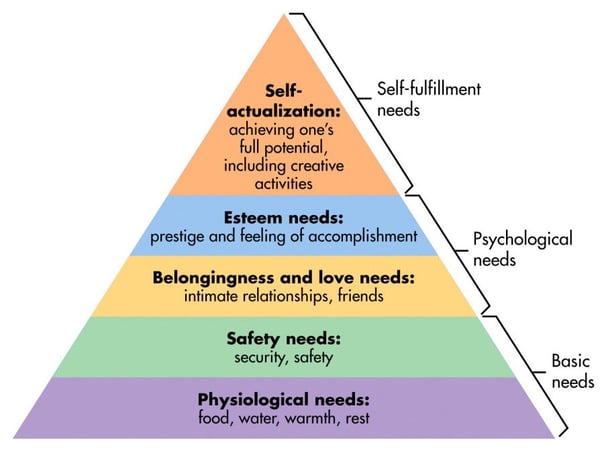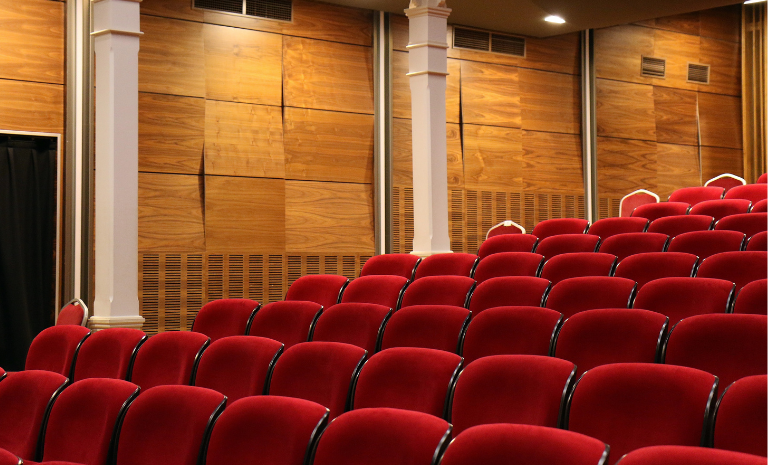Arts and Culture
Business Strategy
COVID-19
Article
Insights & Innovation
101cb5e2-c883-4b0c-8f87-975bbef6b221
6 min
https://edge.sitecorecloud.io/tessituraneab9a-tessiturane5642-staging-5396/media/Images/Stock-Photography/books-jason-wong-768x465.jpg?h=465&iar=0&w=768
Why segmentation is more important than ever during COVID-19
Understanding your audience during a crisis

Associate Director, Business Intelligence, Tessitura
Understanding your audience during a crisis
4/3/2020
6 min
Arts and culture has the power to unite communities in crisis.
There is strong evidence that participation in the arts can contribute to community cohesion, reduce social exclusion and isolation, and/or make communities feel safer and stronger.
Cultural centres often stand at the heart of their communities. With individuals now being asked to engage in social distancing and stay in their homes, arts organisations have the opportunity to use the vast amounts of information they have about their audiences to keep them connected to their artistic communities during a time of isolation. In order to do this effectively, they must understand their audiences’ needs and reach out to them in the right way, with the right content.
At its core, marketing segmentation is about understanding the needs of your current and potential customers, so that you are able to provide the right products and services to the right people, at the right time. During crisis, those needs will change, as will the products and services you’re able to offer to them. It’s therefore important that you consider how to segment your audiences to be sensitive to their needs during this time.
I believe that Maslow's Hierarchy of Needs provides a useful framework for segmenting audiences by their needs related to arts and culture.

Levels 1 & 2: Physiological Needs & Safety
At a basic level, your customers’ primary concern right now will be their physiological and safety needs: the first two steps of the pyramid. While arts and cultural organisations play little role in fulfilling these specific needs, there will be a group of people directly impacted by your closure.
So if we are to focus on a segment for very light touch, easily implemented needs, we can begin with those directly impacted. Those are identified by one common trait: they purchased a ticket, subscription or membership which would have granted them access to a cancelled (or potentially cancelled) event or performance. Their primary need is to cancel that item, whether they exchange for a future date, keep the money on their account or on a gift certificate, donate the funds, or receive a refund. Along with these logistics, they require open communication about what is happening and what comes next.
Level 3: Belonging and Love
Beyond these basic needs, you have a segment of customers and potential customers who seek belonging through their arts and cultural engagement. They attend these activities to be surrounded by likeminded people, to socialise, and feel part of something. While organisations may not be able to offer this physically due to closure, now is the time to embrace digital platforms and social media to continue these shared experiences through online content and open discussions.
While segmenting customers within your database based on these attributes may be difficult if you don’t already capture this level of data in surveys at customer level, it does not rule out the possibility of exploring this area. You know your programme better than anyone, so reflect on your past year, speak with front of house teams to understand which events really brought people together, and where they saw the most social connections taking place. You then have the potential to use this production list in List Manager to email out content, or analyse it using Tessitura Analytics to discover more about who these audiences are. Review your social media channels: where did you see the most shares, tags and community engagement?
Once you know the type of events that fulfilled the need for belonging, you can develop a content strategy to continue to bring these visitors shared experiences online during closure and fulfill that need.
Level 4: Esteem
Other audiences attend arts and culture because it is an important part of who they are. Knowing about cultural activities is important to their own esteem, and a unique live experience gives them a sense of accomplishment. What added value content can you provide for them that they can’t find elsewhere online? Could you host digital Q&A's with your programming team, Artistic Director or other artists? Do you have any interviews you could repurpose? Give this segment content that they can talk about and grant them access to areas of the organisation or programme that they may otherwise not have seen to give them that fulfillment that they need.
Again, if you don’t have this detail at a customer level, you can look to your programme. What did you put on this year that was unique or different, or which you knew would attract only that risk taking portion of your audience? Have you hosted any added value events like Q&As or post show talks that might highlight those visitors who seek a deeper level of engagement from you? This can form the basis of your esteem segment.
Level 5: Self-actualisation
Finally, we have those seeking self actualisation through cultural experiences. These people often look to participate in events, have a deeper level of engagement, and enjoy interpreting art and culture to broaden their understanding of the world and their own role within it. This typically includes participants of adult learning programmes, workshop attendees, immersive theatre performances and events with socially relevant, challenging topics.
Could you continue to host these workshops online or livestream them for a fee? Could you engage artists already creating digital work online to programme a strand of digital works for your online channels for these audiences? Do you have any previous workshops you could revisit through webinars or audio recordings?
Understanding audience needs can enable us to continue exploring ways to fulfill them using the core of what you do every day: creative artistic expression. If we know why our visitors choose to engage in the artistic experiences that they do, we can temporarily (or perhaps for some, more permanently) explore ways to share more digitally focused experiences that audiences and visitors can enjoy, whether alone or as part of a wider connected community from within their own homes.
Your venues facilitate the great artistic opportunities you have available, but without these spaces, these experiences can still exist in some form if you understand the true value of what you offer. Audiences still have needs to be fulfilled, and arts and cultural organisations still have the product to offer them. The curtains may be closing for a time, but the show can go on.
Top photo by Jason Wong on Unsplash
Topics
Arts & Culture
/Business Strategy
/COVID-19

Kate Watson
Associate Director, Business Intelligence
Tessitura

Make your on-sales a success
Ticketing & Admissions / Digital / Customer Service / Technology
Eight tips to help you plan for a smooth on-sale

A contactless customer journey with a personal touch
Arts & Culture / Business Strategy / COVID-19 / Technology / Ticketing & Admissions
How Georgia Aquarium creates a visitor-focused experience